SNVSB11B June 2018 – May 2019 LMZM33606
PRODUCTION DATA.
- 1 Features
- 2 Applications
- 3 Description
- 4 Revision History
- 5 Pin Configuration and Functions
- 6 Specifications
-
7 Detailed Description
- 7.1 Overview
- 7.2 Functional Block Diagram
- 7.3
Feature Description
- 7.3.1 Adjusting the Output Voltage
- 7.3.2 Input Capacitor Selection
- 7.3.3 Output Capacitor Selection
- 7.3.4 Transient Response
- 7.3.5 Feed-Forward Capacitor
- 7.3.6 Switching Frequency (RT)
- 7.3.7 Synchronization (SYNC/MODE)
- 7.3.8 Output Enable (EN)
- 7.3.9 Programmable System UVLO (EN)
- 7.3.10 Internal LDO and BIAS_SEL
- 7.3.11 Power Good (PGOOD) and Power Good Pull-Up (PGOOD_PU)
- 7.3.12 Mode Select (Auto or FPWM)
- 7.3.13 Soft Start and Voltage Tracking
- 7.3.14 Voltage Dropout
- 7.3.15 Overcurrent Protection (OCP)
- 7.3.16 Thermal Shutdown
- 7.4 Device Functional Modes
- 8 Application and Implementation
- 9 Power Supply Recommendations
- 10Layout
- 11Device and Documentation Support
- 12Mechanical, Packaging, and Orderable Information
Package Options
Refer to the PDF data sheet for device specific package drawings
Mechanical Data (Package|Pins)
- RLX|41
Thermal pad, mechanical data (Package|Pins)
Orderable Information
6.8 Typical Characteristics (VIN = 24 V)
The typical characteristic data has been developed from actual products tested at 25°C. This data is considered typical for the device.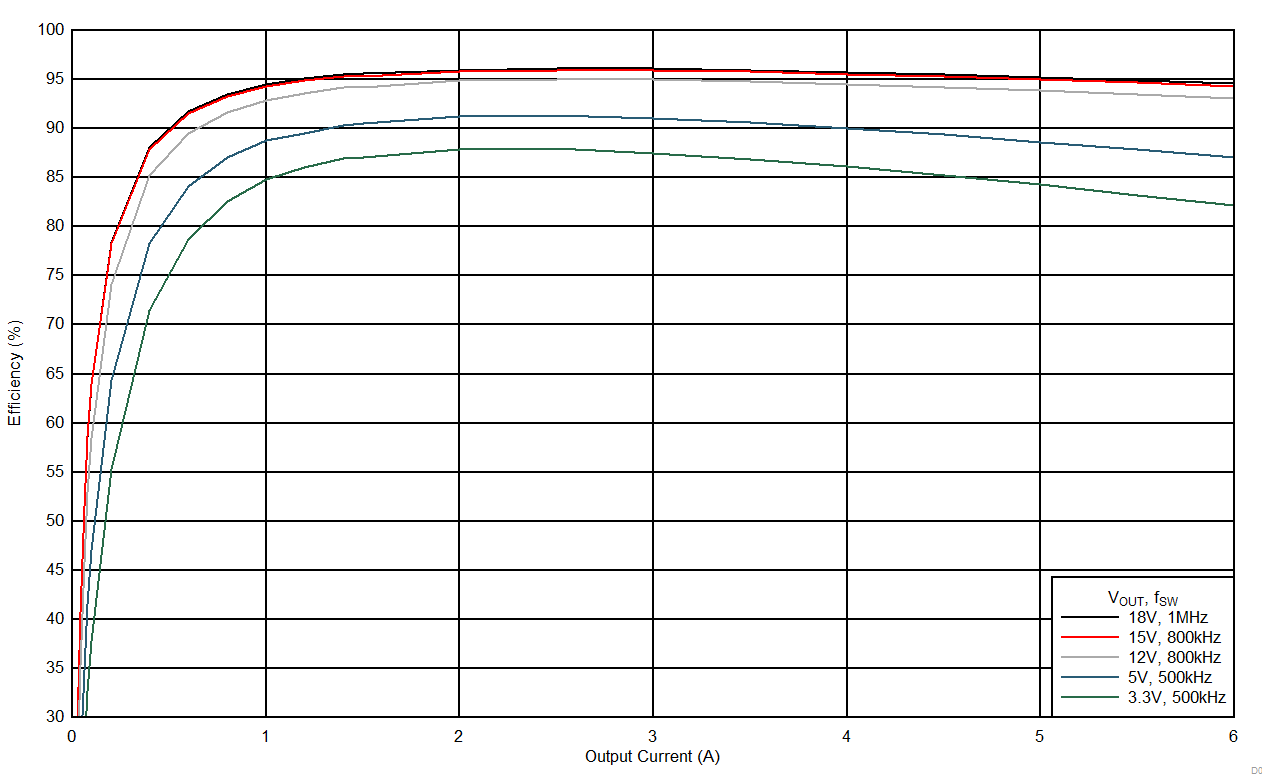
| FPWM Mode | Linear Scale | |
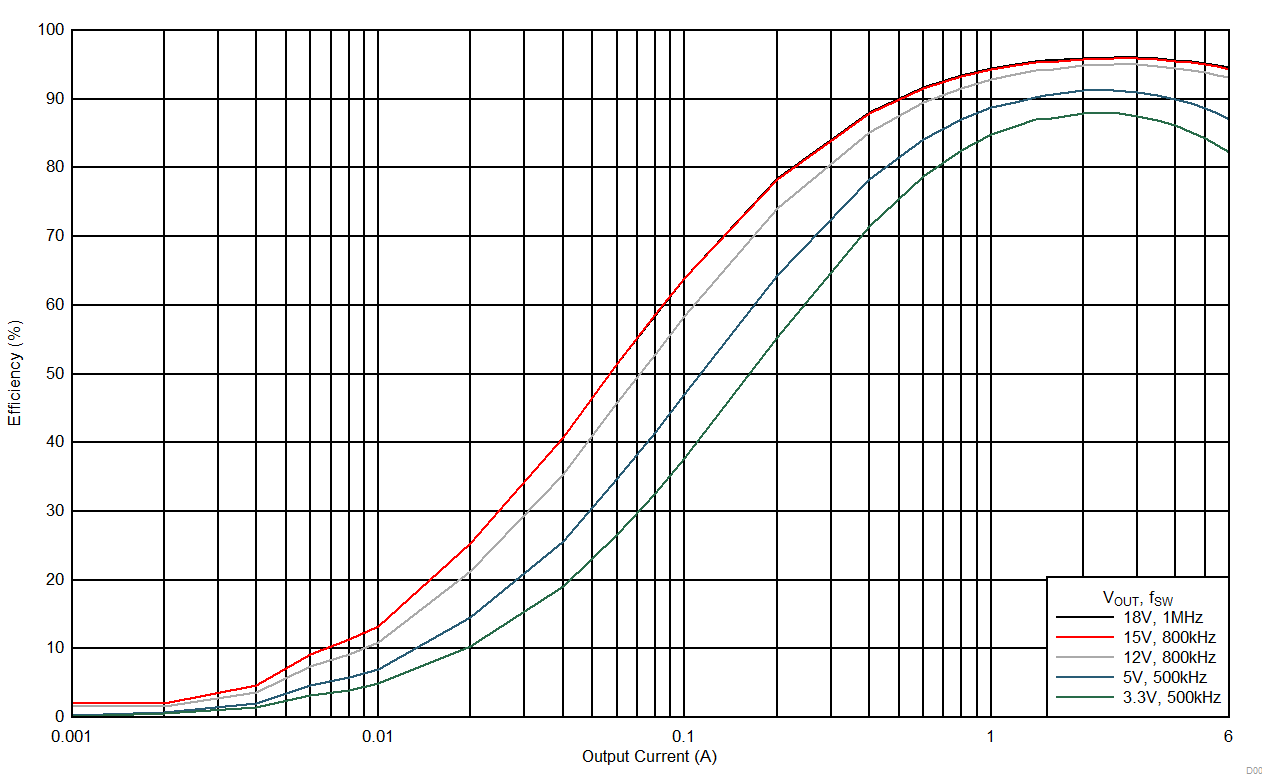
| FPWM Mode | Log Scale | |
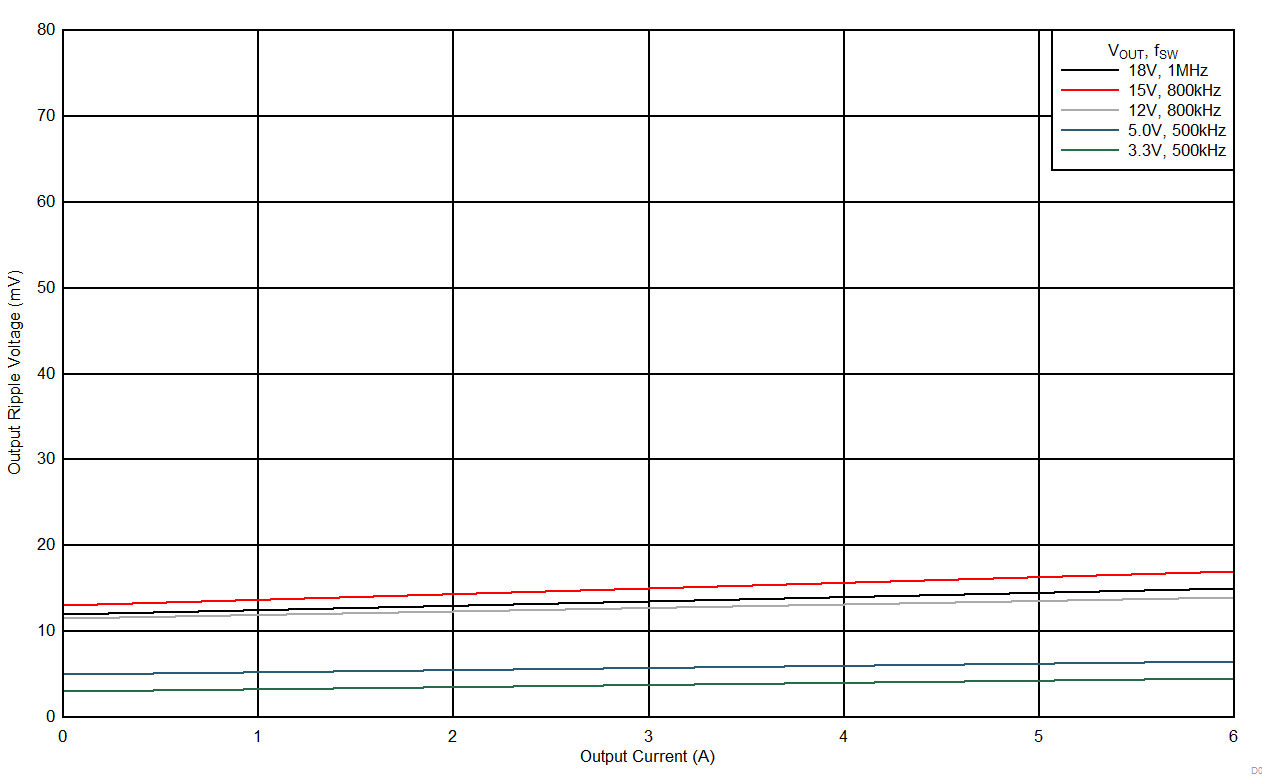
| FPWM Mode | COUT = 4 × 47 µF ceramic | |
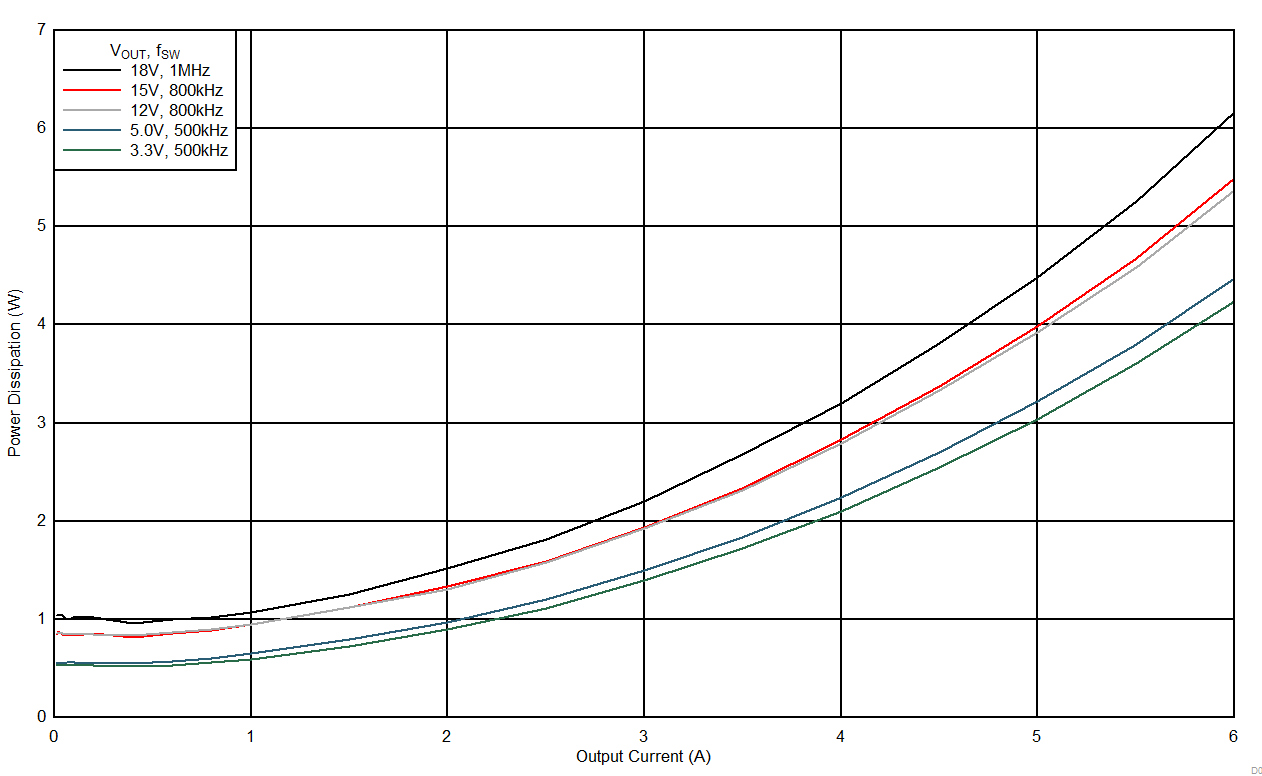
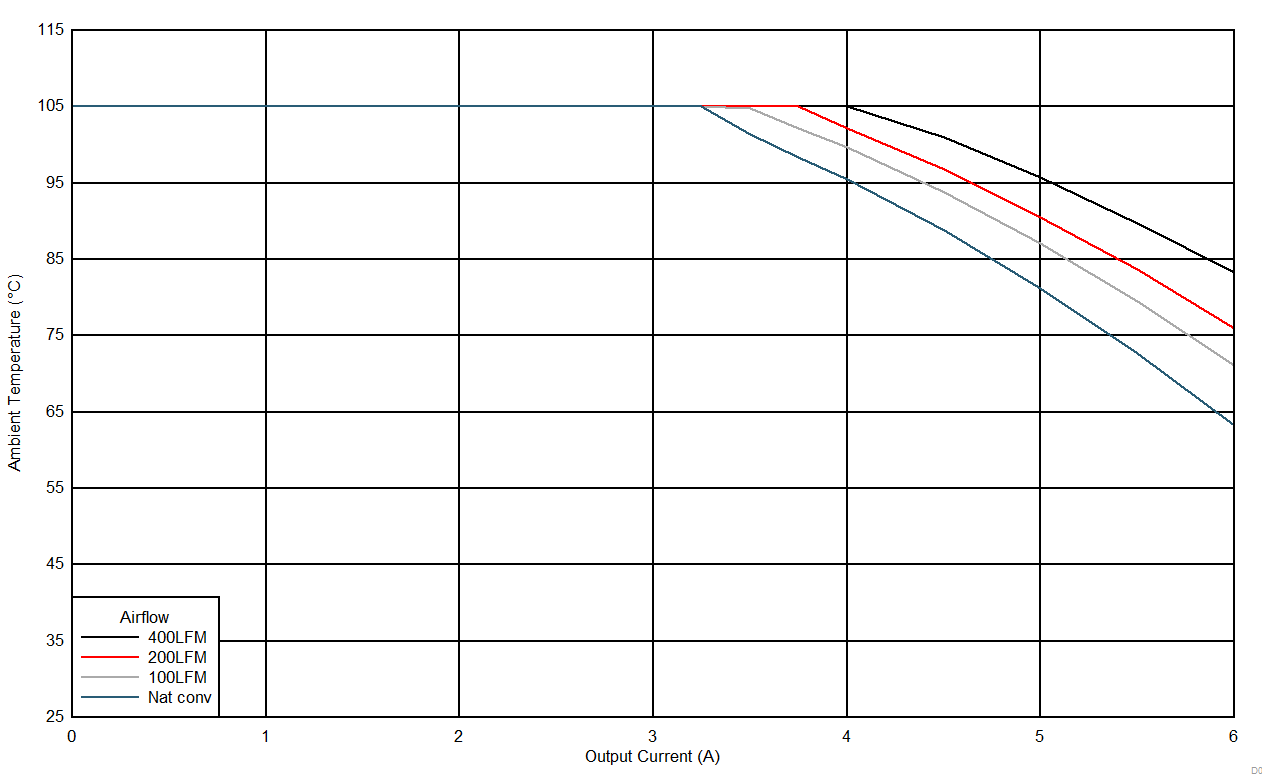
| VOUT = 5 V | fSW = 500 kHz | |
| PCB = 75 mm × 75 mm, 4-layer, 2 oz. copper | ||
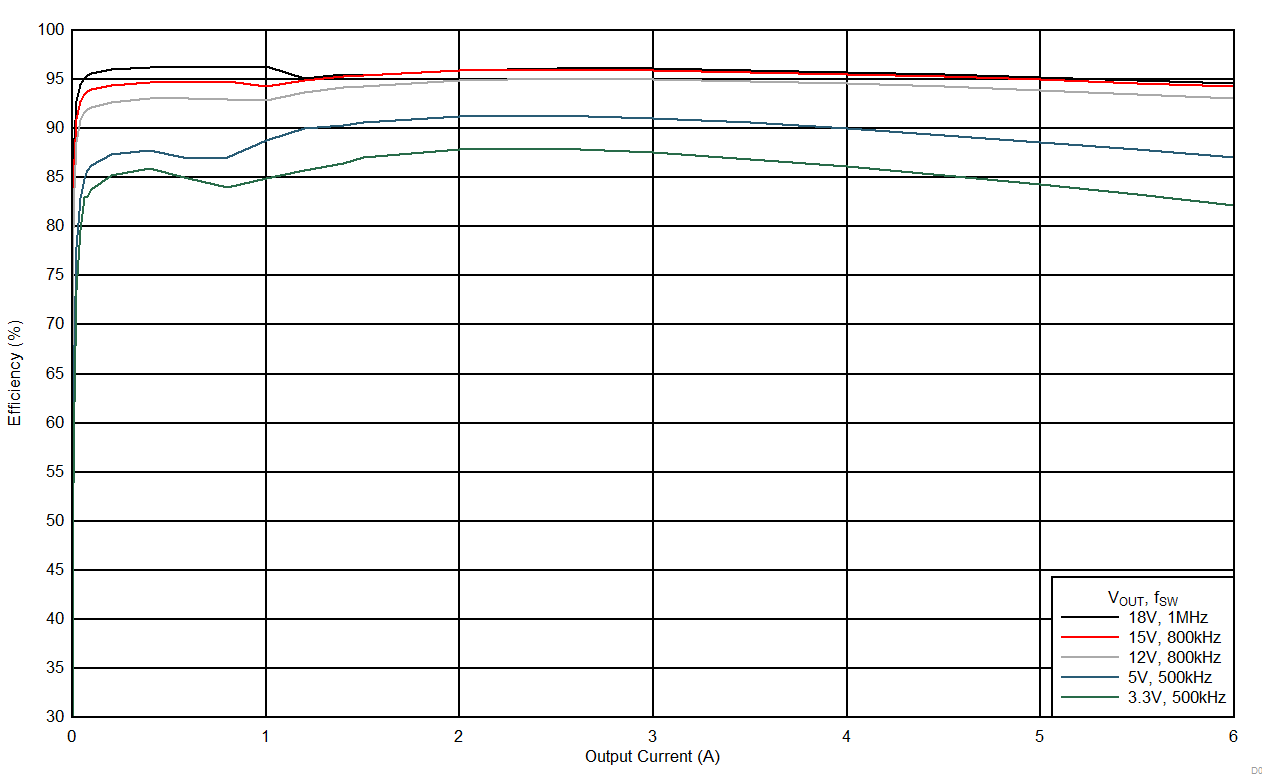
| Auto Mode | Linear Scale | |
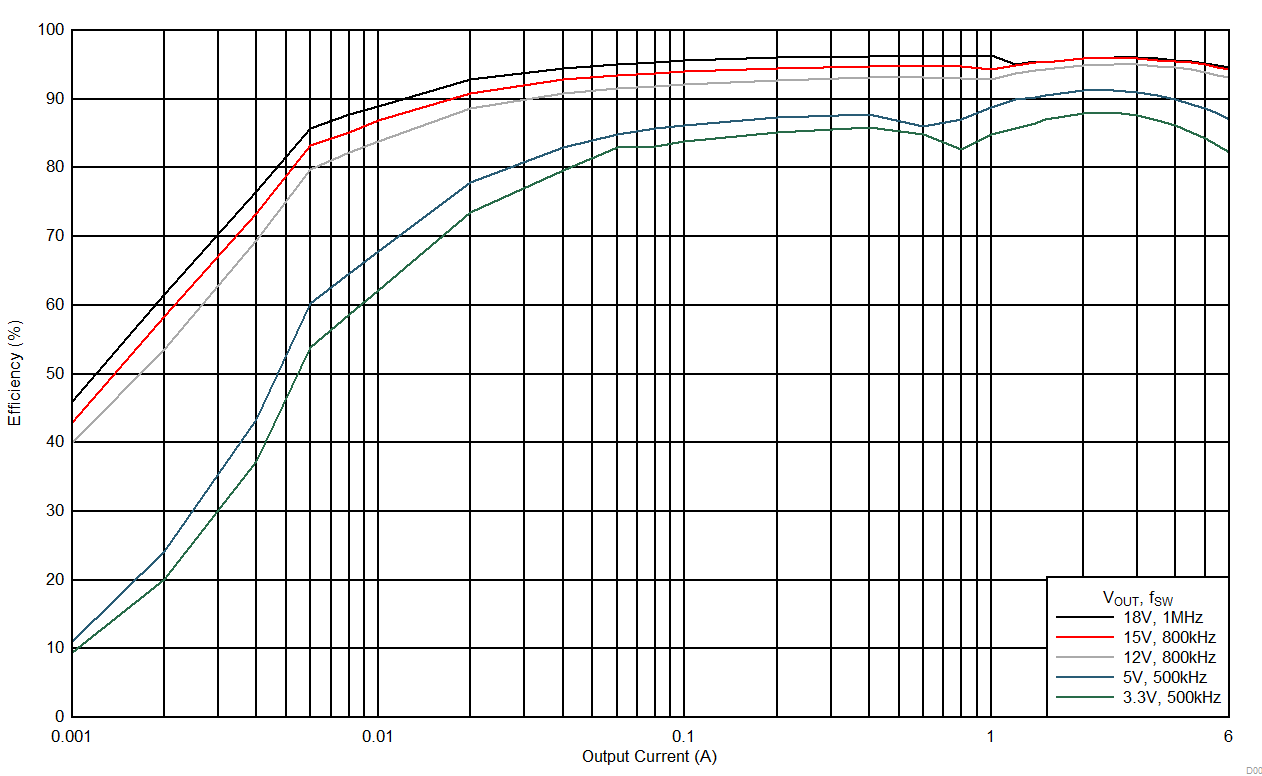
| Auto Mode | Log Scale | |
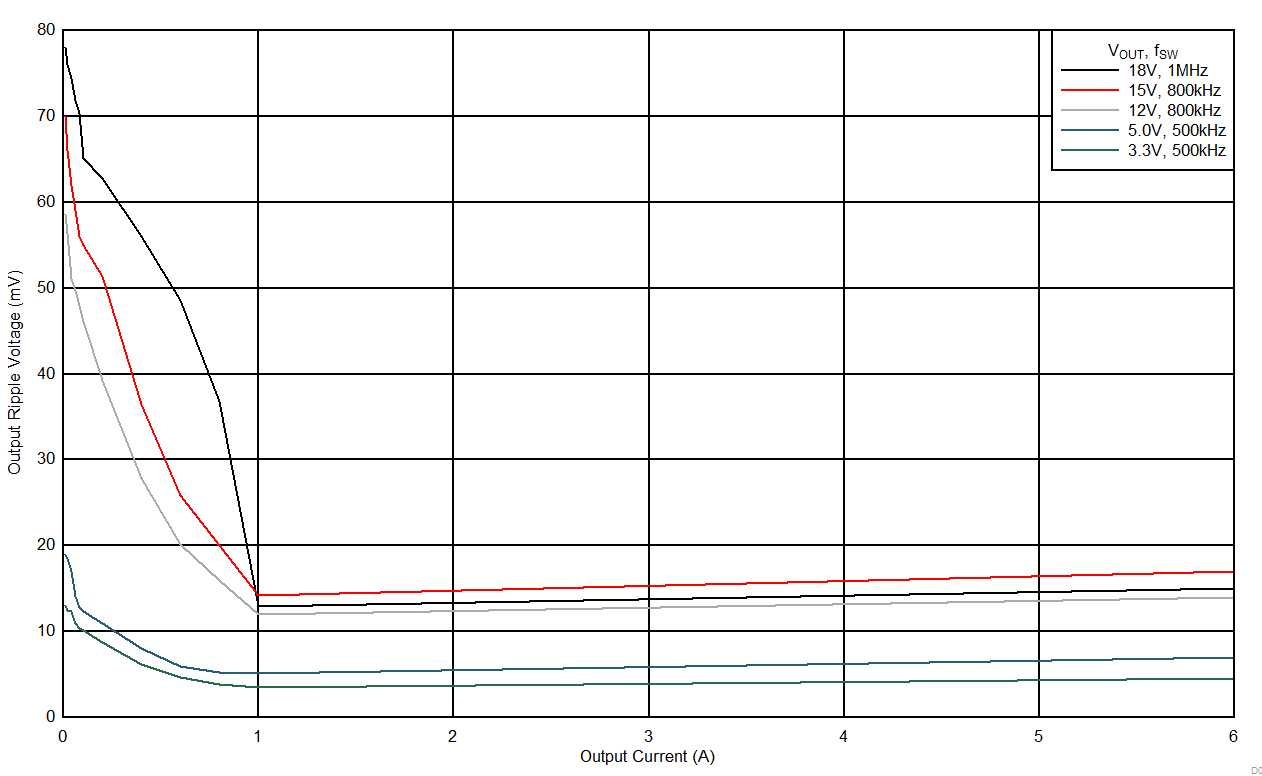
| Auto Mode | COUT = 4 × 47 µF ceramic | |
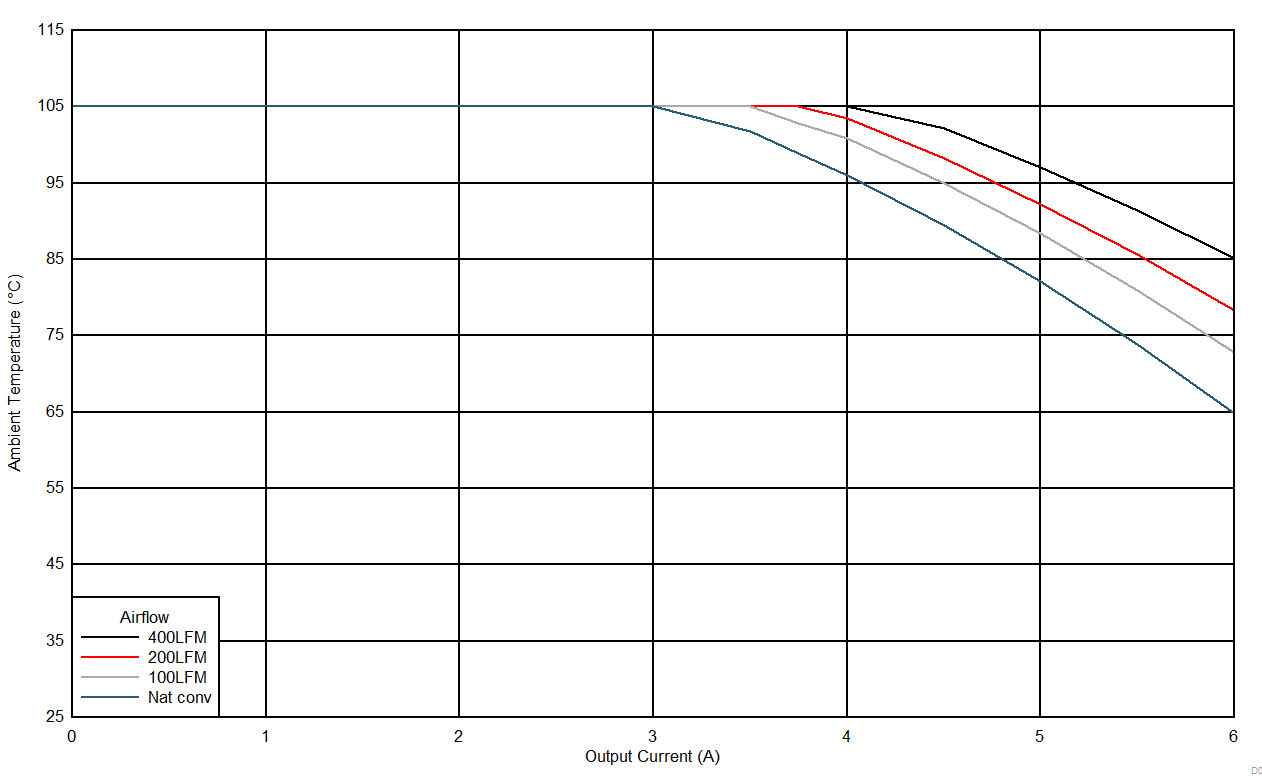
| VOUT = 3.3 V | fSW = 500 kHz | |
| PCB = 75 mm × 75 mm, 4-layer, 2 oz. copper | ||
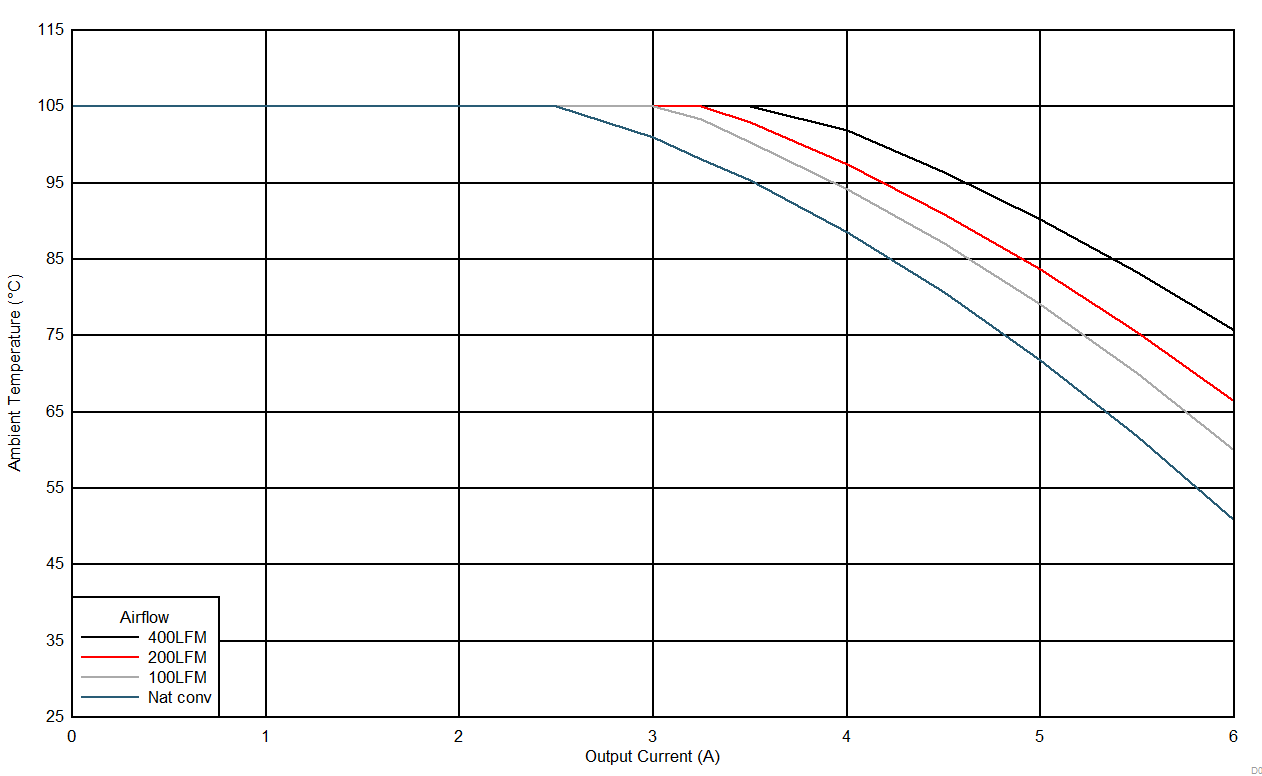
| VOUT = 12 V | fSW = 800 kHz | |
| PCB = 75 mm × 75 mm, 4-layer, 2 oz. copper | ||